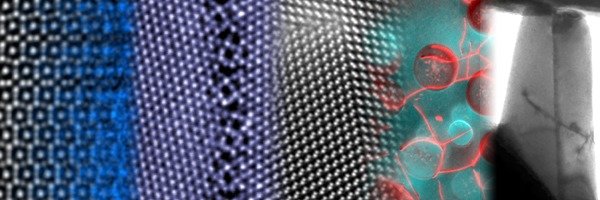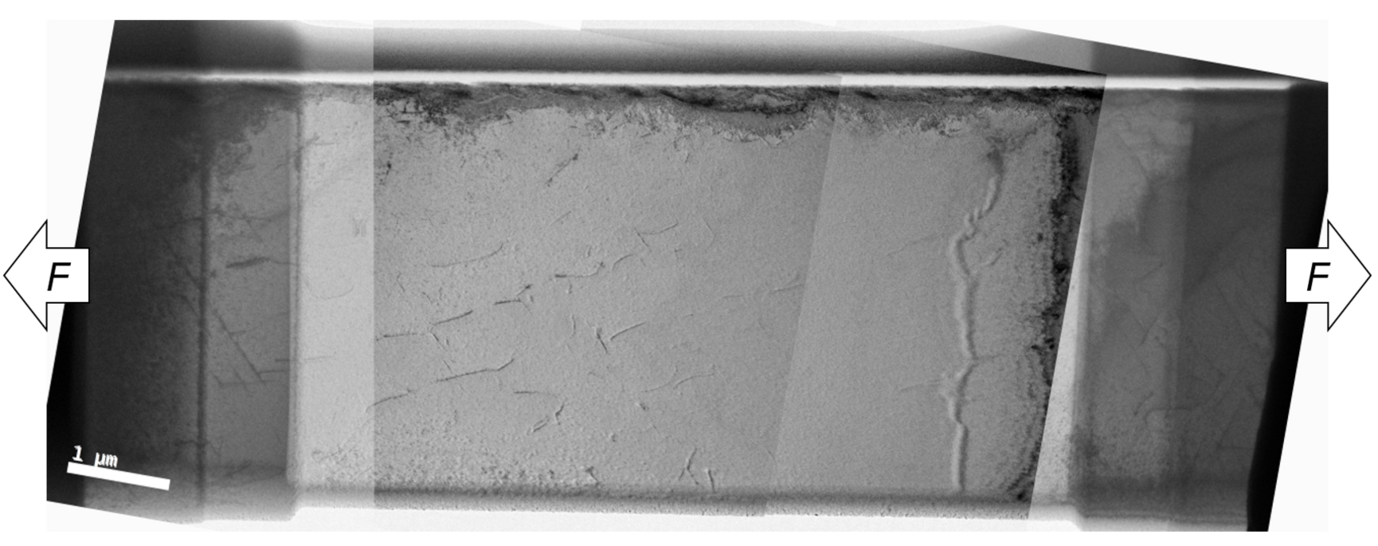
Direct observation of dislocation plasticity in HEA by in-situ TEM
An on going project is focusing on the dislocation plasticity in a single crystal FeMnCoCrNi HEA. In-situ TEM tensile straining tests (Fig. 1), as well as micropillar compression tests, are conducted to observe the deformation behavior and correlate it with the mechanical response during deformation. Characteristics of dislocations, such as Burgers vector, dislocation density, stacking fault width and velocity are measured to reveal the fundamental origins of plastic deformation in HEAs (Fig. 2). In addition, atomic-scale chemical analysis by STEM-EDS and atom probe tomography (APT) resolve the presence of local compositional inhomogeneities or second phase formation on a sub-nanometer scale.
In future work, we will extend the developed methodologies to study the interaction of dislocations with internal material defects. Especially grain boundaries are suggested to play an important role in the strengthening of HEAs, thus we are focusing on exploring the interaction between dislocations and grain boundaries by high resolution and in-situ TEM. The grain boundary structure, chemistry and properties of HEAs will be explored by high-resolution TEM and STEM imaging, in-situ TEM deformation, and APT. The diffusion behavior and mobility of the pre-characterized grain boundaries at elevated temperatures will be established by in-situ heating experiments in the TEM.

Figure 1: FIB lamella for in-situ TEM straining tests

Figure 2: Weak beam dark field image of an array of dislocations in HEAs

